Bitcoin (BTC) has hit six-week highs and held onto its gains since — is it the start of a trend change?
After passing $21,000 twice over the past week, BTC/USD is still lingering near the top of its multimonth trading range.
The coming week promises to provide a fresh dose of volatility thanks to the United States Federal Reserve commenting on interest rates and the economic outlook.
The key date is Nov. 2, which will see:
- Decision on key rate hikes
- Comments and economic projections
- Speech from Fed Chair Jerome Powell
While opinions are mixed as to whether Bitcoin can stand the heat, the market has been caught in disbelief — liquidations in recent days made records for 2022.
Should further upside ensue, traders may have to reassess their take on Bitcoin’s weakness in what many thought would be the quarter in which BTC/USD sees a capitulation to new macro lows.
The overall crypto market cap has already passed the $1 trillion mark once again, according to data from CoinMarketCap.
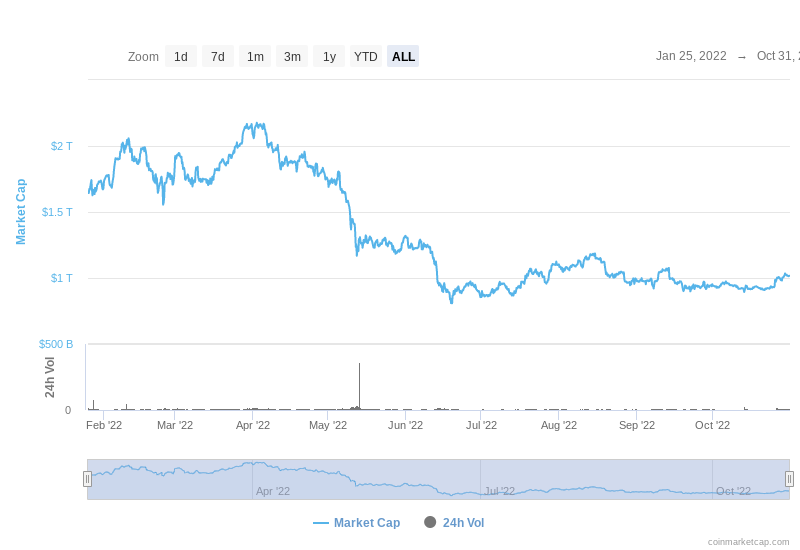
Hours from the monthly close, “Uptober” may at least still live up to its name.
Cointelegraph takes a look at three major factors influencing crypto market strength in the current environment.
The Fed could change its tune on rate hikes
When Cointelegraph reported on why the crypto market saw fresh losses last week, the United States Federal Reserve was first on the list.
Concerns focused on unwavering policy keeping the U.S. dollar strong and rates surging higher for the foreseeable future — the worst-case scenario for risk assets.
Nonetheless, the past week has seen the results of that policy spill over into other economies, notably Japan, which made repeated interventions in its exchange market to prop up the flagging yen.
At the same time, rumors are gathering over the outlook for rate hikes as the Fed runs out of room to maneuver. After next month’s hike, suspicions are that policy will begin to U-turn, making smaller hikes in subsequent months before reversing altogether in 2023.
As such, any signal that the Fed is preparing to soften its hawkish stance is being seized on by markets weary from a year of quantitative tightening (QT).
November’s FOMC meeting is still overwhelmingly expected to result in a 0.75% rate hike, matching September and July, according to CME Group’s FedWatch Tool.
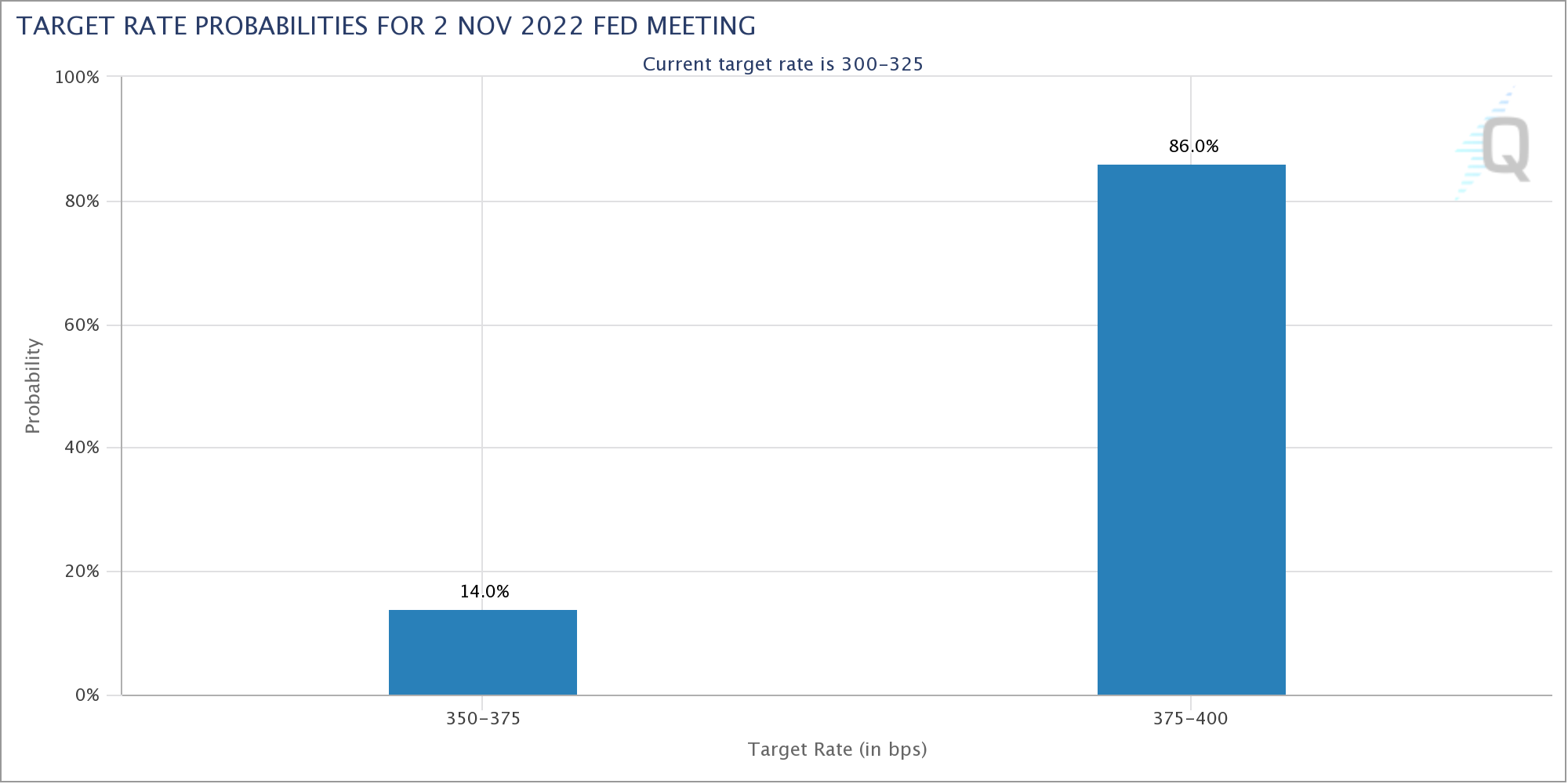
Bitcoin volatility snaps record low levels
Analyzing data from Cointelegraph Markets Pro and TradingView, it becomes clear that BTC/USD has been too quiet for too long.
This is especially visible in the Bollinger Bands volatility indicator, which has been rarely closer together in Bitcoin’s history and demanding a breakout for weeks.
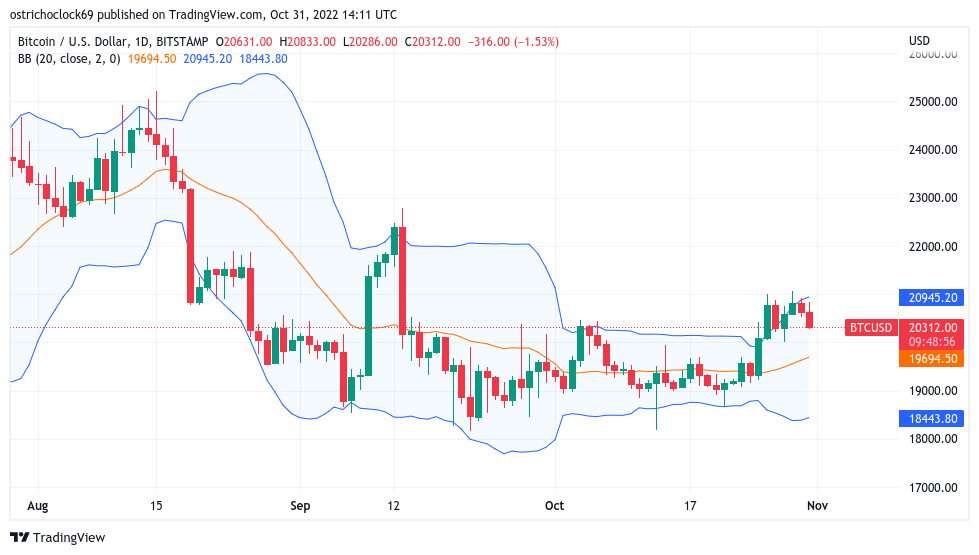
This month, Bitcoin volatility even fell below that of some major fiat currencies, making BTC look more like a stablecoin than a risk asset.
Analysts had long expected the trend to undergo a violent change, however; and true to form, crypto markets did not disappoint.
A look at the Bitcoin historical volatility index (BVOL), recently at multiyear lows seen only a handful of times, shows that Bitcoin still has a way to go to abandon this characteristic.
“Pretty funny that volatility has been so compressed and we’ve become so conditioned as market participants that the slightest 3% move feels like a 15-20% move,” William Clemente, co-founder of crypto research firm Reflexivity Research, commented.
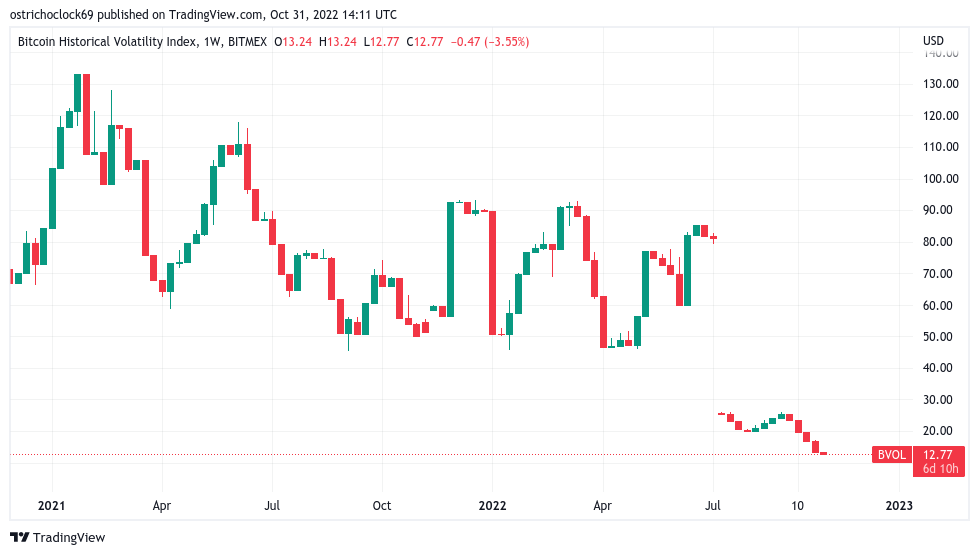
Dollar eyes a new chapter
After a parabolic uptrend throughout 2022, the U.S. dollar is only just beginning to show signs of weakness.
Related: Analyst puts Bitcoin price at $30K next month with breakout due
The U.S. dollar index (DXY) recently hit its highest levels since 2002, and momentum may yet return to take it even higher — at the expense of risk assets and major currencies alike.
In the meantime, however, the DXY is under pressure, and its descent came in lockstep with a return to form for Bitcoin and altcoins.
This flags an issue that Bitcoin bulls are keen to shake — an ongoing strong correlation with traditional markets and inverse correlation with the dollar.
“Bitcoin now has a correlation with Gold of about 0.50, up from 0 in mid-August,” trading firm Barchart revealed this week.
“While the correlation is higher with $SPX (0.69) and $QQQ (0.72), the correlations have decreased of late.”
Fellow analyst Charles Edwards, founder of crypto asset manager Capriole, noted that Bitcoin macro price bottoms are often accompanied by increasing gold correlation.
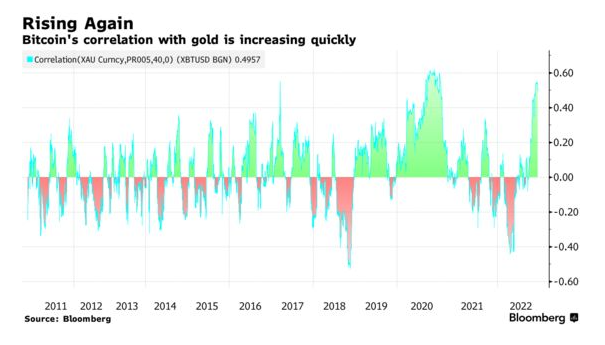
Scott Melker, the analyst and podcast host known as “The Wolf of All Streets,” also confirmed a changing relationship between Bitcoin and the Nasdaq.
“Nasdaq futures are down. Bitcoin is up. The short term correlation between the two has disappeared over the past few weeks. I will take it,” he summarized.
The views and opinions expressed here are solely those of the author and do not necessarily reflect the views of Cointelegraph.com. Every investment and trading move involves risk, you should conduct your own research when making a decision.
